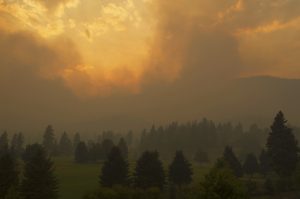
The wildfires in Alberta are still blazing, and our hearts are with all those affected by the Fort McMurray disaster. Now, smoke is moving across the prairies through Saskatchewan. How can people with food allergies and/or asthma be prepared for these kinds of disasters?
Safe food and water. Keep at least 3-5 days worth of non-perishable allergy-friendly foods in your home. The Red Cross recommends keeping one gallon of water per person, per day as well.
Medicines and supplies. The Red Cross recommends keeping at least a seven-day supply of daily medications. For epinephrine, it’s good to have backup (an extra set of EpiPens) in in case you need to use it and do not have access to pharmacies for refill. If you are doing TPN or other tube feeding, keep extra tubes and an extra, fully-charged pump.
Emergency contacts: Consider keeping a land line in your home, in case phone lines work and electricity doesn’t. Another option is to have a solar powered cell phone charger.
Asthma and blowing smoke: “Smoke from forest fires is a major problem especially for kids and adults with chronic lung disease like asthma,” says Nancy Ross, a Certified Asthma Educator at The Children’s Allergy & Asthma Education Centre in Winnipeg: “The goal is to always keep the best possible control of asthma. This often includes use of daily Controller medicines that protect the airways from asthma triggers.
“If the air quality is poor due to forest fires then it’s best to be active indoors,” adds Nancy. “When we exercise we breathe faster and will breathe in more polluted air.” The Saskatchewan Lung Association is providing updates on lung-health issues and the wildfires, and information on air quality is being regularly updated by Environment Canada.
Help today: For more information on how you can help those impacted by the Alberta wildfires, visit The Canadian Red Cross.
Tags: disaster, fort mcmurray, kit, smoke, wildfire
